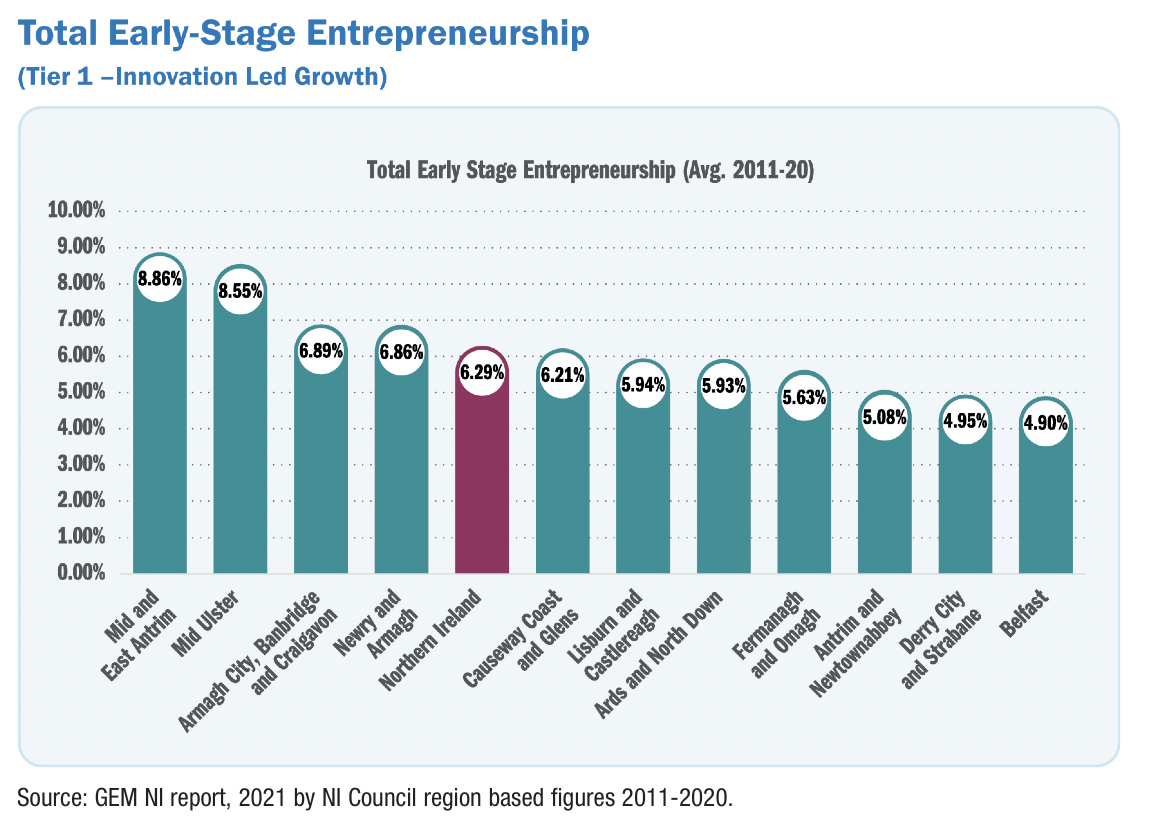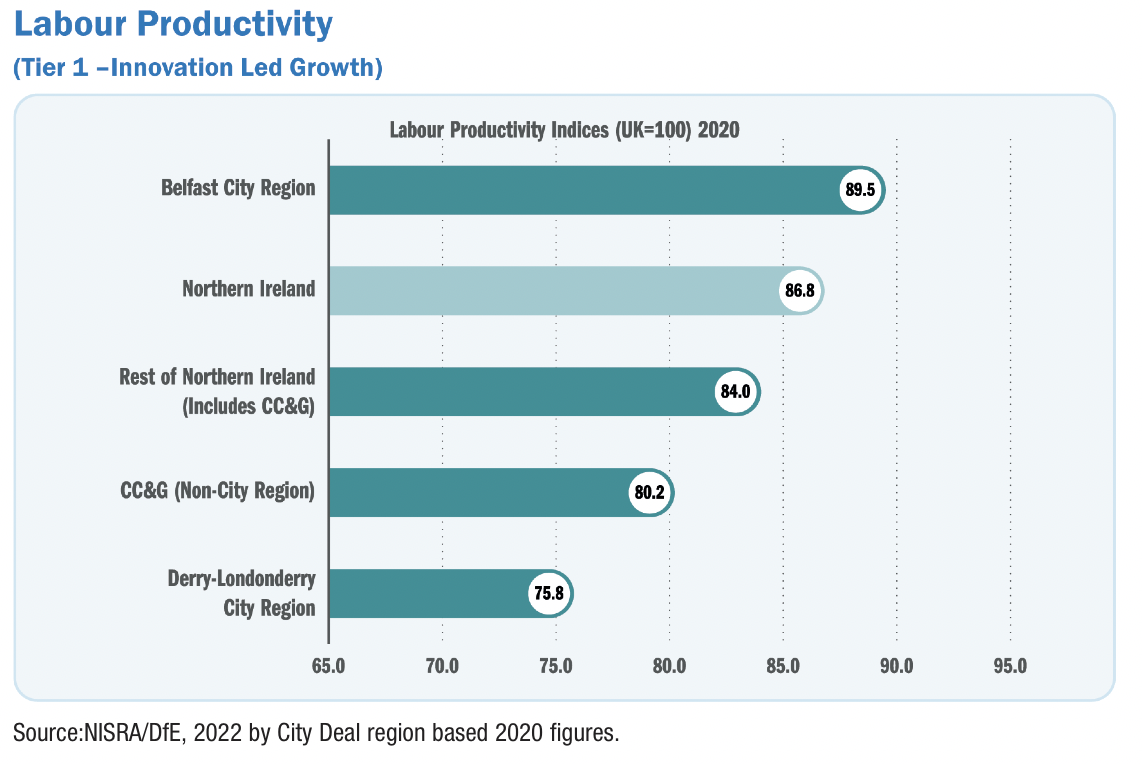Place 10X: Tackling inequality

Officials in the Department for the Economy (DfE) are preparing policy advice that aims to tackle sub-regional and local inequality.
Following the conclusion of a call for evidence on Place 10X in July 2023, the Department says that it is now working to create a body of information to inform policymakers and a future Minister in the Department for the Economy of what central interventions and support are needed or wanted, to address sub-regional economic inequality in Northern Ireland.
While Northern Ireland has a relatively new macroeconomic approach in the form of 10X Economy, and local councils have their own strategic approaches, it is recognised that no defined DfE sub-regional approach exists, nor does a strategic link between the three levels.
Acknowledging that the status quo “has not worked to date”, the call for evidence states that many areas will continue to show disparity “unless we change our approach”.
“There is also the chance to maximise opportunities in areas that are performing better and to examine if central government support can accelerate growth. It highlights there is a challenge for the Department to consider,” it states.
Analysing sub-regional disparities on the geographic model of the four City and Growth Deal regions as an evidence base, disparities highlighted by the report include:
Labour market: The Mid South West Region has the highest employment rate of the five regions identified, closely followed by Belfast, and so both sit above the Northern Ireland average of 70.2 per cent. Causeway Coast and Glens has a below regional average employment rate of 66.1 per cent, but is still significantly higher than the regional laggard, which is Derry City and Strabane at 62.5 per cent.
As expected, Derry and Strabane, with the lowest employment rates, also has the highest unemployment rates of 34.2 per cent, which is significantly higher than Mid South West’s regional low of 25.8 per cent.
Labour productivity: The Derry City Region ranks lowest in productivity measurement (75.8), again well below the Belfast City Region’s high of 89.5. Both the Causeway Coast and Glens (non-city region) and the rest of Northern Ireland (including the Causeway Coast and Glens city region), are below the Northern Ireland average.
Gross household disposable income: From 2011 (until 2020) Derry City and Strabane, Mid South West, and Causeway Coast and Glens have all experienced annual average growth in gross household disposable income of between 2 and 3 per cent. This figure, however, belies the significant gap that exists between the regions. Only Belfast sits above the Northern Ireland average of around £17,250, at £17,750. Again, Derry and Strabane is a significant laggard in this regard, with a gross household disposable income rate of just under £15,500, also comparing unfavourably to Causeway Coast and Glens (over £17,000) and Mid South West (over £16,500).
Innovation active firms: Of the 11 council regions, Belfast is only ranked sixth, alongside Mid and East Antrim and Antrim and Newtownabbey, in the amount of innovation active firms as a percentage of total firms. The highest-ranking region is Ards and North Down (47 per cent), closely followed by Causeway Coast and Glens (45 per cent). There is a significant gap to the two regions with the lowest percentage in the form of Mid Ulster (37 per cent) and Newry, Mourne and Down (34 per cent).
Early-stage entrepreneurship: Using a measurement of the propensity of individuals to be entrepreneurial to determine total early-stage entrepreneurship over a period of 2011 to 2020, Belfast is ranked lowest at 4.9 per cent, well below the Northern Ireland average of 6.29 per cent. Mid and East Antrim rank highest at 8.86 per cent.
Defining the concept of ‘place’, the Department says that at its most general it encompasses three main components of location; locale; and sense of place. “Taken together it can be an idea of identity and belonging, both physically and culturally, and allows some to define the special quality of a place,” it adds.

The Department stresses that place-based interventions are not simply a local version of a macro approach, but instead aim to tackle inequality or disadvantage. “In this way place-based interventions can accelerate the development of a more robust local ecosystem, identifying and unlocking capability while removing systematic weaknesses.”
Interestingly, in seeking to define DfE’s sub-regional role, the call for evidence highlights the likelihood that the Department acts as a coordinator between local partners, rather than taking the lead of being the decision-maker.
In asking the question ‘what interventions could occur’ the Department is not drawn on any particular actions but suggests that a range of interventions are possible “from policy and legislative changes to enable greater focus on disparities and inequalities or to remove barriers to success, to funded programme interventions that are targeted rather than rolled out at regional level”.

However, it emphasises that prior to an intervention, “launching a Place 10X policy, building a place-based dataset, embedding the concept in DfE and its ALBs, and forming a network of stakeholders committed to this approach would be a step change”.
The Department defines Place 10X as: “Locally designed interventions to deliver innovative, inclusive, and sustainable economic growth. Building on the existing strengths of a place to unlock potential, to empower communities, and to tackle sub regional and local inequality.”
Following the closure of the call for evidence in July 2023, the Department says that it is considering the responses and continues to engage with key partners on this work.
“The Department will produce a report summarising the findings, emerging key themes and actions planned. The report will also set out further detail on the next steps. The Department aims to publish the report in the autumn of 2023.”





